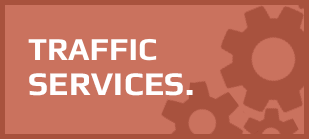More than just making sure your landing page and your links are relevant, you also want to make your website visitor’s journey relevant. This means making his browsing experience in your site something where he can take something out of it so he eventually becomes a customer.
In this Video:
00:12 – One Word That Describe Effective SEO
00:37 – This Should Be Relevant Too!
00:52 – When Your User Lands On Your Site
01:03 – #1 Links Within The Content
01:21 – #2 Relevant Menus
02:03 – #3 Relevant Call To Action
02:22 – The Desired End Result From This
02:33 – Site Check For You
- Check your website, get a free web analysis report here.
- Get started on getting that user experience your clients deserve, work with SEO Sherpa.
Subscribe: iTunes
In this SEO update – how to ensure your website visitors stay on your site longer and buy more of your products and services.
Effective SEO is all about one single word, and that is relevancy. When you have relevant content on your site that relates to the search terms being used by your prospects and then you have relevant high authority sites either mentioning you or linking to you within their content, your website will be climbing up the search engines fast. But, there is one more often overlooked thing that must be relevant to ensure you maximize your SEO results and that is a relevant user journey.
Once a visitor lands up on your website, the next step you offer them must be relevant to move that user along the journey. Let’s use some examples to show you how you can make this step more relevant.
The first way is with links within the content within your post or your page. Allow your visitors to go off and explore that topic matter even further by linking off to relevant pages and posts on your site. You can also link off to products too, which is of course where you monetize that visitor.
The second way is with relevant menus and I’ll use an example to illustrate this. Let’s say that you’ve got an e-commerce store and you sell mainly two things in categories bags and let’s say shoes. If someone lands up on a page that’s all about bags, you want that menu item to represent things about bags so you might want to link off to clutch bags, hand bags and other types of bags. If however they land up on a page that is all about shoes, make sure that that menu is again relevant to them. Perhaps, perhaps it would like off to loafers, sandals, high heels, etc. Make sure that the menu that they are seeing is relevant to the content on that page.
And the third way is using relevant calls to action. Again using our e-commerce example, if someone’s on a page looking at bags, you would say something like To Order Your Bag, Click Here. The message is right on point and relevant to that particular visitor.
So what’s the result of all of this? It means that people will stay on your site longer, they’ll bounce off less and of course you’ll make more sales because the message you’re offering to people is much more relevant. So my challenge for you this week is- go and have a look at your website page, are the menus relevant? Are the calls to action relevant? And are the links to individual content relevant to the particular page?
I’d love to hear your feedback and comment, please post them beneath to wherever you find this video. This has been James Reynolds from Veravo.com. See you soon!
















